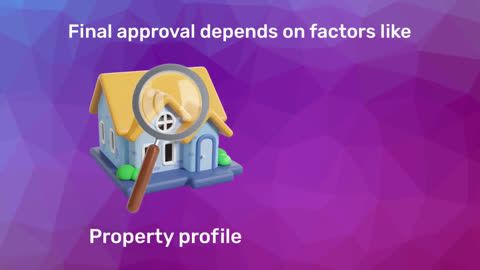Understanding income tax
Income tax is a tax imposed by the government on the income of individuals, businesses, and other entities. It is collected by the government to fund public services such as healthcare, education, defence, and infrastructure. In simple terms, it is a way for the government to raise funds from the earnings of its citizens.In India, income tax is regulated by the Income Tax Act of 1961, which defines how the tax is to be calculated, collected, and managed. The amount of tax you pay depends on your income, the type of income, and the various deductions available under the law.
Income tax slabs in India
The income tax system in India is progressive. This means that the more you earn, the higher your tax rate will be. The government divides taxpayers into different categories based on their income. These categories are known as "income tax slabs."Income tax slabs for individuals differ between the new tax regime and the old tax regime.
New tax regime
| Income slabs | Tax rate |
| Up to Rs. 3,00,000 | Nil |
| Rs. 3,00,001 to Rs. 7,00,000 | 5% |
| Rs. 7,00,001 to Rs. 10,00,000 | 10% |
| Rs. 10,00,001 to Rs. 12,00,000 | 15% |
| Rs. 12,00,001 to Rs. 15,00,000 | 20% |
| Above Rs. 15,00,000 | 30% |
Old tax regime
| Total income | Individuals below 60 years | Individuals aged below 60 years to 80 years | Individuals above 80 years |
| Up to Rs. 2,50,000 | Nil | Nil | Nil |
| Rs. 2,50,001 to Rs. 3,00,000 | 5% | Nil | Nil |
| Rs. 3,00,001 to Rs. 5,00,000 | 5% | 5% | Nil |
| Rs. 5,00,001 to Rs. 10,00,000 | 20% | 20% | 20% |
| Above Rs. 10,00,000 | 30% | 30% | 30% |
How is income tax calculated?
To calculate your income tax, you need to follow a few basic steps:1. Determine your gross income: Add up all sources of income, including salary, business income, interest on savings, and others.
2. Apply deductions: Under the Income Tax Act, you can avail of various deductions like Section 80C (for investments), Section 80D (for insurance premiums), and more.
3. Subtract exemptions: Some types of income are exempt from tax, such as income from agricultural activities or income from a pension under certain conditions.
4. Calculate the taxable income: Subtract the deductions and exemptions from your gross income.
5. Apply the tax slabs: Based on your taxable income, apply the appropriate tax rate from the slabs.
Types of income tax in India
Income tax in India can be classified into different types based on the source of income. The main types are:1. Income from salary: This is the most common type of income tax. If you are employed, your employer will deduct tax at source (TDS) and deposit it on your behalf.
2. Income from business or profession: If you are self-employed or run a business, you will have to calculate and pay tax based on your business income.
3. Income from property: If you own property, such as a house or land, the rental income you earn will be taxable.
4. Income from capital gains: When you sell assets like stocks, bonds, or real estate, the profit earned is considered capital gains and is taxable.
5. Income from other sources: This includes income like interest on savings accounts, dividends, or any other miscellaneous sources of income.
What is tax deducted at source (TDS)?
Tax Deducted at Source (TDS) is a system in which the payer (like your employer, bank, or tenant) deducts tax from the payment made to the payee (you). This is then deposited with the government. TDS helps the government collect tax in advance and avoid evasion.For example, if you are a salaried employee, your employer will deduct TDS from your salary each month based on the applicable tax slabs. The amount deducted is then deposited with the Income Tax Department on your behalf.
Filing Income Tax Returns
In India, filing an Income Tax Return (ITR) is mandatory for anyone who earns above the exempt income limit. Filing your return helps the government determine if you have paid the correct amount of tax. If you have paid excess tax, you can claim a refund; if you have underpaid, you may have to pay the remaining amount.There are various forms for filing tax returns based on the type of income you earn. The process of filing an ITR has been simplified over the years, and now you can file returns online through the Income Tax Department's e-filing portal.
Deductions and rebates in income tax
India's tax system allows various deductions and rebates that can help reduce your taxable income. One of the most commonly used deductions is under Section 80C, where you can claim deductions for investments in life insurance, Provident Fund (PF), National Savings Certificates (NSC), and other savings schemes.Another popular deduction is for home loan interest under Section 24(b), where you can claim up to Rs. 2 lakh on your home loan interest payments. This makes owning a home even more affordable, as you get a tax benefit while repaying your home loan.
How home loans affect your taxes
When you take a home loan, you may be eligible for certain tax benefits. These benefits can significantly lower your taxable income, especially for first-time homebuyers. The tax deductions on home loans are available under two sections:- Section 80C: You can claim a deduction of up to Rs. 1.5 lakh on the principal repayment of your home loan.
- Section 24(b): You can claim a deduction of up to Rs. 2 lakh on the interest paid on your home loan.
Explore Bajaj Housing Finance Home Loan
If you are planning to buy your dream home, Bajaj Housing Finance Home Loan can be a great option. Not only do you benefit from affordable interest rates and flexible repayment options, but you also maximise your tax benefits.Here are a few benefits of opting for Bajaj Housing Finance Home Loan:
1. High loan amount: Secure funding up to Rs. 15 crore* to turn your dream home into reality.
2. Low interest rates: Enjoy interest rates starting 8.25%* p.a, and EMIs as low as Rs. 741/lakh*.
3. Quick approval: Get approved within 48 Hours* of applying – sometimes even sooner.
4. Flexible repayment tenure: Choose a repayment term of up to 32 years for comfortable EMIs.
5. Simple application: Take advantage of doorstep document collection for a smooth process.
6. Balance transfer facility: Move your existing home loan and get a top-up loan with better terms.
So, why wait? Apply for a Bajaj Housing Finance Home Loan today and start saving on your taxes while making your homeownership dreams come true.




